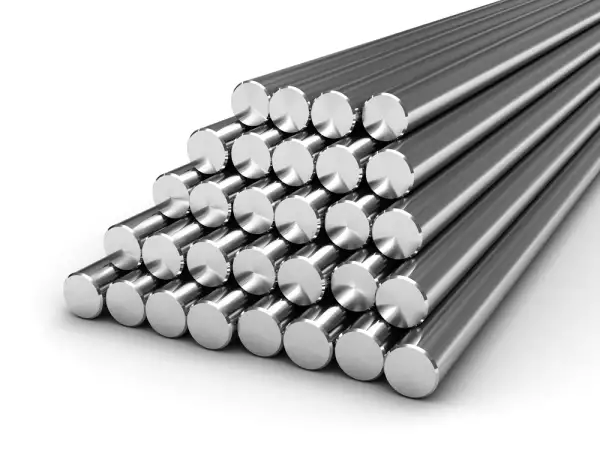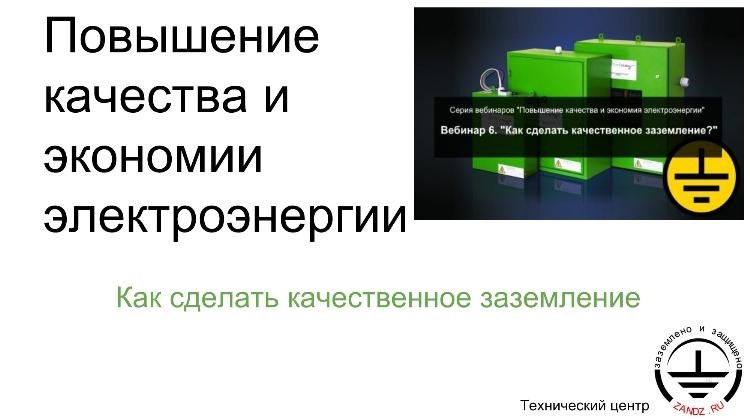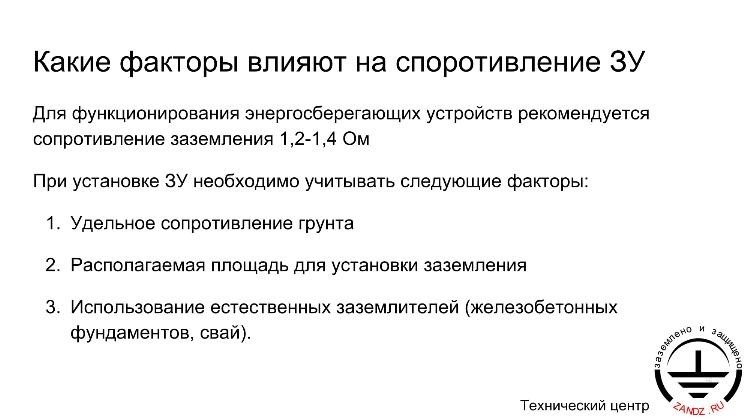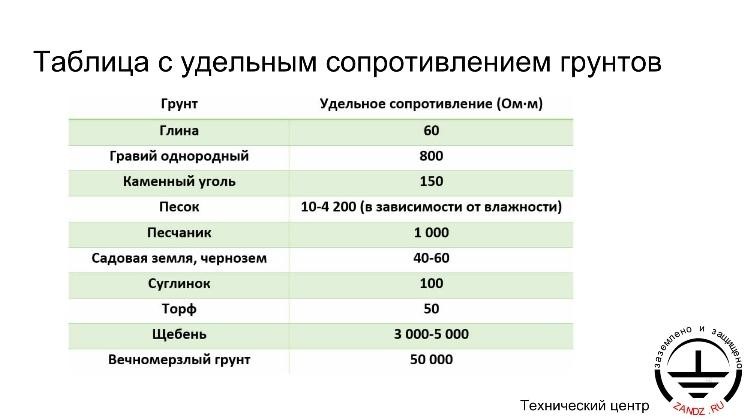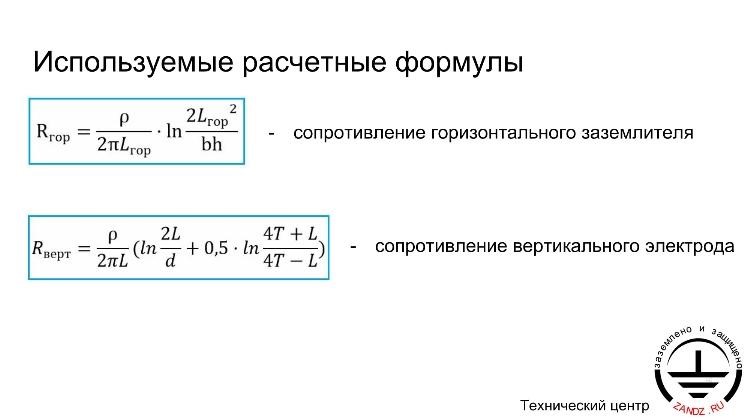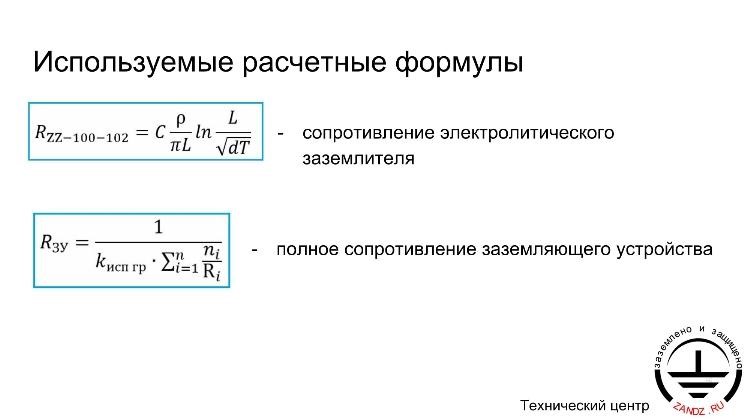Webinar #6 of Electric energy saving and quality improvement" series
(broadcast on July 19, 2016 at 11:00 Moscow time)
Concluding the webinar series, we would like to dig deeper into the role of earthing in ESH operation, and pay attention to earthing requirements and types. We will provide examples of how modular and electrolytic earthing can be used at various facilities: residential buildings, cross-connect equipment, railway transport facilities, hydroelectric power stations, oil products storehouses, etc.
You'll learn how to ground the equipment in full accordance with existing standards, to achieve a 2 Ohm resistance and what earthing arrangement to use in composite soils.
This webinar will be presented by Dmitry Krasnoborov, technical specialist on earthing and lightning protection.
720p full screen watching is recommended.
Webinar text. Page 1
Fast navigation by slides:
Approximate reading time: 28 minutes.
| Повышение качества и экономии электроэнергии | Electric energy saving and quality improvement |
| Как сделать качественное заземление | How to make proper grounding |
| Технический центр | Technical center |
How can one make a high-quality earthing system?
— Good afternoon, dear colleagues! I'm Dmitry Krasnoborov, and I am a specialist of the ZANDZ.com Technical Center. Today's webinar is the last one of "Electric energy saving and quality improvement" series. Previous webinars describing the operation principles of energy-saving hardware (ESH), pilot projects and solutions for various industries, including residential and household sector were delivered by Sergey A. Karatygin, General Director of GreEnergy JSC, full member of the International Academy of Science and System Research, author and technical editor of more than 30 books. Today I'm going to tell you how to correctly calculate earth resistance and to earth energy-saving hardware. During and after the webinar, please feel free to ask any questions that I will try to answer.
| Какие факторы влияют на сопротивление ЗУ | Which factors impact the ground terminal resistance |
| Для функционирования энергосберегающих устройств рекомендуется сопротивление заземления 1,2-1,4 Ом | Recommended grounding resistance for the energy saving hardware functioning is 1.2 - 1.4 Ohm |
| При установке ЗУ необходимо учитывать следующие факторы: | Following factors shall be taken into account when installing the ground terminal: |
| 1. Удельное сопротивление грунта | 1. Soil resistivity |
| 2. Располагаемая площадь для установки заземления | 2. Available area for the grounding arrangement |
| 3. Использование естественных заземлителей (железобетонных фундаментов, свай) | 3. Use of natural ground terminals (reinforced concrete foundations, piles) |
Factors Affecting the Earthing System Resistance
— Here we go. Energy-saving hardware increase the power factor, equalize phase loads, suppress harmonic distortion and limit current surges. They optimize the efficiency of resistivity with the earthing resistance of 1.2 - 1.4 Ohms.
| Таблица с удельным сопротивлением грунтов | Table of soil resistivity |
| Грунт | Soil |
| Удельное сопротивление (Ом*м) | Resistivity (Ohm*m) |
| Глина | Clay |
| Гравий однородный | Homogeneous gravel |
| Каменный уголь | Coal |
| Песок | Sand |
| Песчаник | Sandstone |
| 10-4 200 (в зависимости от влажности) | 10-4 200 (depending on moisture) |
| Садовая земля, чернозем | Garden soil, black soil |
| Суглинок | Clay loam |
| Торф | Peat |
| Щебень | Crushed stone |
| Вечномерзлый грунт | Permafrost soil |
Table: Soil Resistivity
— Let's proceed with the first item — soil resistivity. It is one of the main factors, since soil resistivity differs greatly depending on the type of soil. In the table you can see the range, which differs from 50 Ohm*m in peat, which is quite widespread, to 50,000 Ohm*m in permafrost. Electrical resistivity of rocky soil varies from 3,000 to 5,000 Ohm*m. Soil resistivity depends on soil type, size, shape, particle poles, and the content of electrically conductive minerals in it. Humidity and the content of dissolved substances that will make up the electrolyte solution, and together determine the specific resistance of the soil.
| Используемые расчетные формулы | Applied calculation formulas |
| сопротивление горизонтального заземлителя | Resistance of the horizontal ground terminal |
| сопротивление вертикального электрода | Resistance of the vertical electrode |
Calculation Formulas Used:
— The importance of the soil resistivity can be seen with help of the calculation formulas. Soil resistivity is directly proportional to the current resistance of the earthing system.
The maximum energy efficiency indicator is achieved in this range of earthing resistance. It was tested and proven on real facilities during their operation. In spite of the fact that resistivity is efficient even with an increased recommended value, this value should be observed for maximum efficiency. On this slide, you can see the main factors that influence the earthing system resistance: they are soil resistivity, available area for the installation of the earthing system and the use of natural grounding electrodes, such as reinforced concrete foundations and piles.
| Используемые расчетные формулы | Applied calculation formulas |
| сопротивление электролитического заземлителя | Resistance of the electrolytic ground terminal |
| полное сопротивление заземляющего устройства | Total resistance of the ground terminal |
Calculation Formulas Used (continued)
— Besides, there is electrolytic earthing, which can affect the soil, reducing its resistivity through the nearest coefficient C, but it is still directly proportional to the resistivity. You can also see the electrical impedance formula.
Next page >>
slides 6–10
Related Articles:
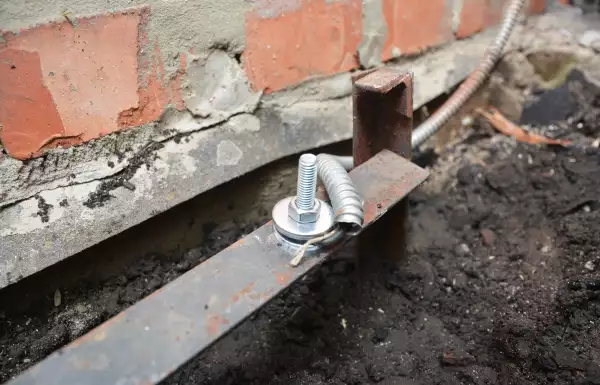 Why Cannot Vertical Earthing Devices Be Installed Close to Each Other?
Why Cannot Vertical Earthing Devices Be Installed Close to Each Other?
 Electrolytic Grounding in Permafrost Soils: Should Vertical of Horizontal Electrodes Be Used?
Electrolytic Grounding in Permafrost Soils: Should Vertical of Horizontal Electrodes Be Used?

